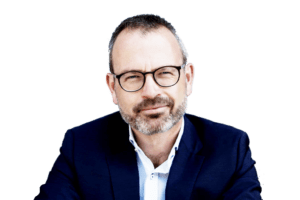Opinion
The Valley of Life: To China and back in a minute
Søren Bregenholt
This article is more than 7 years old.

You don’t need to be Sherlock to figure this one out (photo: Pixabay)
From a life science export perspective, Swedish and Danish exports to China are on the rise. In 2017, they increased by 45 and 16 percent to 7.882 and 8.64 billion kroner respectively.
China is now the second biggest market for both countries, overtaking the US to marginally trail Germany for Sweden, and behind only the US for Denmark, with Germany third.
The obvious conclusion is that export-driven growth in life science will to an increasing extent depend on the demands of the growing Chinese markets.
Room for optimism
To keep the growth engine running in the long run, we need to invest in research and innovation today, tomorrow, next month and next year! China invests heavily in life science, and as the sector becomes more innovative, it will likely become a strong competitor in the longer term.
Fortunately, there is much room for continued optimism, as it is not without reason nor pride that we refer to Medicon Valley as Scandinavia’s leading life science region.
Medicon Valley is one of Europe’s ten largest life science research clusters according to CWTS Leiden Ranking.
In 2018 Sweden and Denmark were among the innovation leaders in the EU, with Medicon Valley ranked among the very most innovative regions in the EU.
Patently sturdy
If we look at an indicator such as life science patent applications to the European Patent Office, Denmark and Sweden registered an increase of 15 and 6 percent from 2016-2017. Denmark made 643 applications – its highest number since 2010.
Since patents are one of the crucial preconditions for commercialising innovation in the life science industry, the rise in applications bodes well for longer term growth and our ability to serve the Chinese market.
All the pieces in place
As documented in the recently published State of Medicon Valley analysis (download free of charge at bit.ly/2yLxCtH), the region has all the pieces needed to become the most vibrant, attractive life science cluster in Europe.
To fulfil that potential, we need a dedicated effort to put the pieces together, including continued industry support from regional and national politicians.
If you look at the current national life science strategies, there are only some indications that the governments have carefully explored the potential of aligning their strategies around the strongest life science cluster in the Nordics.
This, therefore, is one of the few pieces still missing. But fortunately it will be easy to find if you go looking for it!

About
Søren Bregenholt
As the chairman of the Medicon Valley Alliance – the gold-labelled Danish-Swedish life science cluster organisation – Søren will address current trends and challenges in the sector.










































